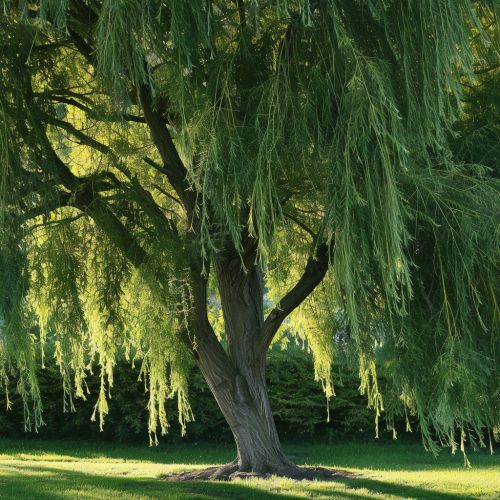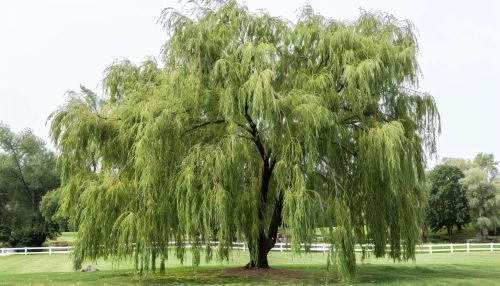Salix
Taxonomy and Description
Salix, commonly known as willow, is a genus of woody plants in the family Salicaceae. The genus is comprised of around 400 species of deciduous trees and shrubs, found primarily in cold and temperate regions of the Northern Hemisphere. The name "Salix" is derived from the Latin word for willow.


Willows are characterized by their slender, flexible branches and lanceolate leaves. The leaves are typically arranged alternately and have a serrated margin. The flowers of Salix species are catkins, which are produced in early spring before the leaves. The catkins are either male or female, with both types found on separate trees (dioecious).
Species and Distribution
The Salix genus is diverse and widespread, with species found in a variety of habitats, from arctic and alpine tundra to tropical rainforests. Some of the most well-known species include the White Willow (Salix alba), Weeping Willow (Salix babylonica), and the Black Willow (Salix nigra).
Salix species are often found in riparian and wetland habitats, as many species have a high tolerance for waterlogged soils and flooding. They are also commonly found in disturbed areas, such as roadsides and abandoned fields, where they can quickly colonize and stabilize the soil.
Ecology and Adaptations
Willows play a crucial role in many ecosystems. They provide habitat and food for a wide range of wildlife, including insects, birds, and mammals. Many species of insects, such as the Willow Leaf Beetle and the Willow Sawfly, are specialized to feed on willow leaves.
Willows have several adaptations that enable them to survive in harsh environments. Many species have a high tolerance for cold and are able to survive in the extreme conditions of the arctic and alpine tundra. They also have a high tolerance for waterlogged soils and can survive in areas prone to flooding.
Uses and Cultural Significance
Willows have been used by humans for thousands of years for a variety of purposes. The flexible branches of many species are used for weaving baskets and other items. The bark of some species, such as the White Willow, contains salicin, a compound that was used in the past for pain relief and is the precursor to modern aspirin.
In many cultures, willows have significant symbolic meanings. In China, the willow is a symbol of vitality and growth, while in ancient Greece, it was associated with death and mourning.
Conservation and Threats
While many Salix species are widespread and common, some are threatened by habitat loss, pollution, and climate change. Conservation efforts for these species often involve habitat restoration and the planting of willows to stabilize soils and prevent erosion.
